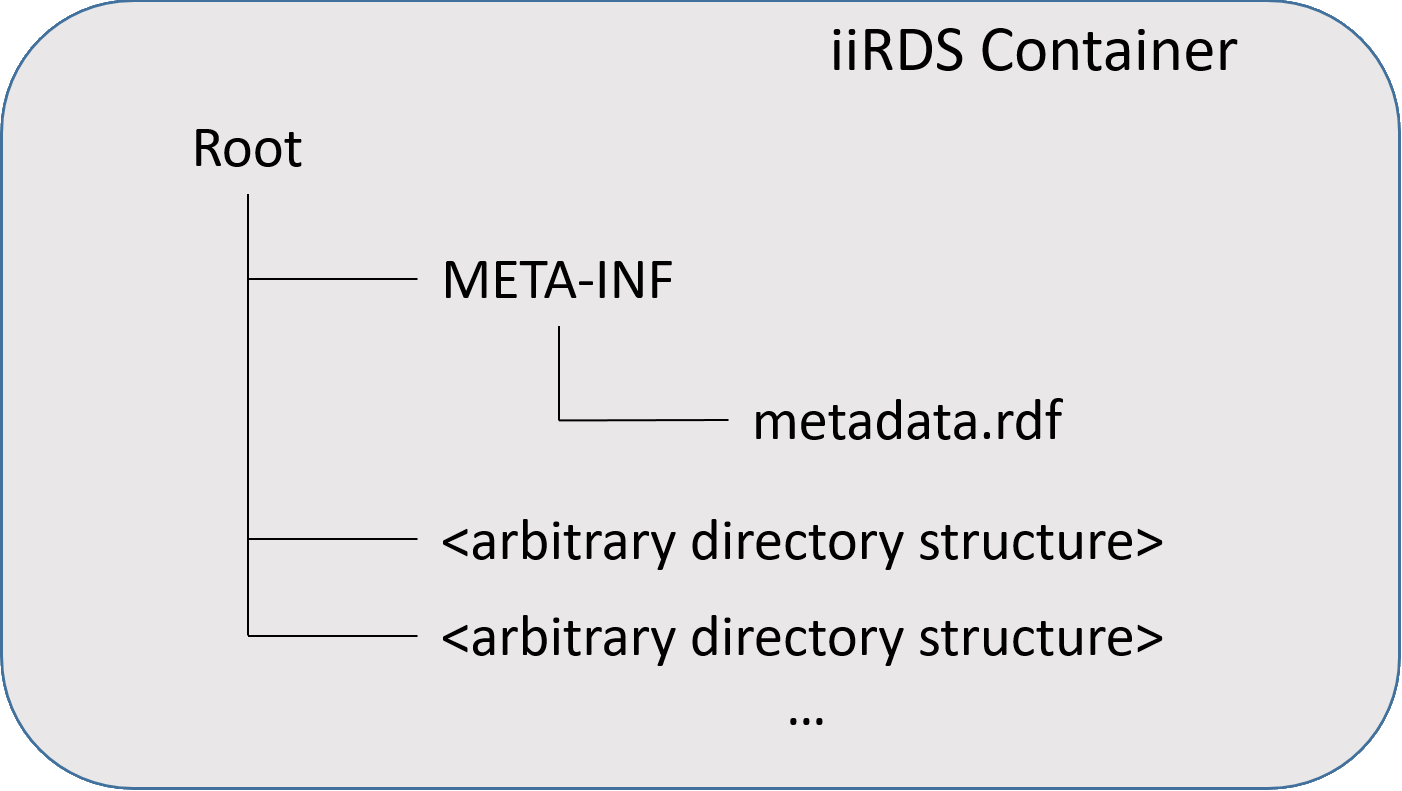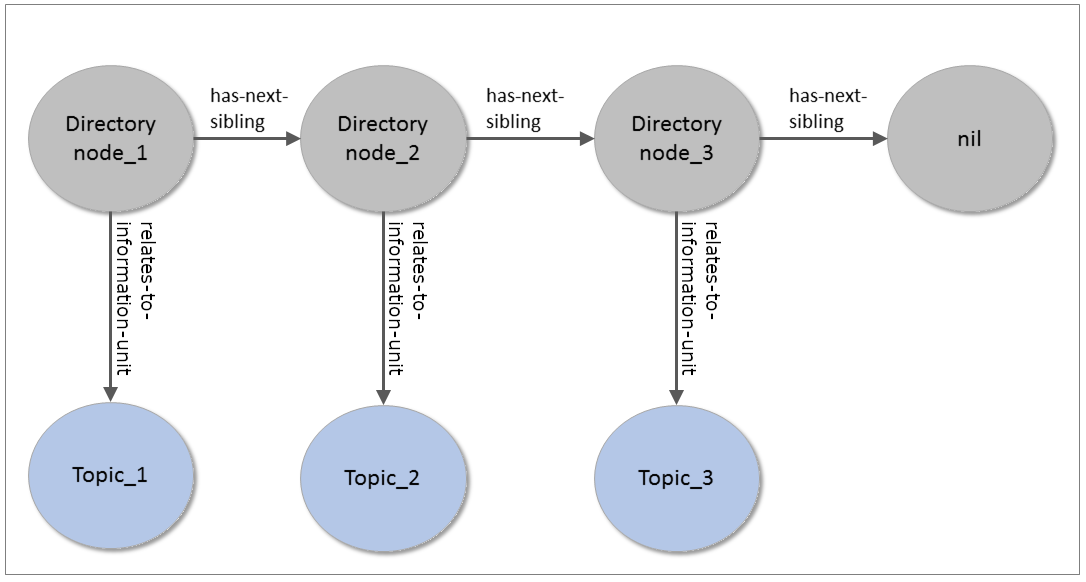5. iiRDS Package and Container
An iiRDS package is a bundle of information units including content and metadata for delivery from an iiRDS Generator to an iiRDS Consumer. An iiRDS package MUST implement an iiRDS ZIP archive.
5.1 iiRDS Container
An iiRDS container is a directory structure that includes all files of an iiRDS package.
An iiRDS container MUST have a single root directory.
5.1.1 Metadata Location
An iiRDS container MUST have a directory META-INF. The directory is exclusively used for metadata on the iiRDS package and its contents.
The META-INF directory MUST contain the file metadata.rdf containing all metadata in RDF 1.1 XML syntax (see [rdf-syntax-grammar]). It is RECOMMENDED for iiRDS Consumers to ignore any other files in the META-INF directory.
5.1.2 Content Location
All other files (content, like PDF, HTML, media, Javascript, CSS) MUST be stored in arbitrary subdirectories below the root directory. Content files MUST NOT be placed in the root directory or in META\-INF directory.

5.1.3 Names of Files and Directories
For file and directory names, all Unicode characters [UNICODE] MAY be used, with the exception of the following characters:
/,”\*:<,>\- the DEL character (U+007F)
- characters from the ranges U+0000 to U+001F and U+0080 to U+009F
- characters from the private use Unicode areas
File names are case-sensitive and MUST be unique within their parent directories. The length of file names is limited to 255 characters. Full path names (file names including the full directory path from the root) MUST NOT exceed 260 characters).
Limits have been chosen based on limits of commonly used file systems.
5.2 iiRDS ZIP Archive
An iiRDS ZIP archive is an iiRDS container implementation using a ZIP archive, e.g. for transportation and exchange between systems. The iiRDS ZIP archive is the default implementation of the iiRDS container. All processing applications MUST support this implementation.
The file name of the iiRDS ZIP archive MUST have the file name extension .iirds.

The ZIP archive file format is defined in [ZIP].
In addition to the iiRDS container specifications, the root directory of the ZIP file MUST contain a file named mimetype. It MUST contain the following ASCII-encoded text in a single line, without any line delimiters such as CR or LF:
application/iirds+zipThe file MUST be the first entry in the ZIP file and it MUST be stored uncompressed (“Stored” mode). By doing so, file types contained in iiRDS ZIP archives can be detected automatically without having to unpack the archive.
5.2.1 Mimetype of iiRDS
iiRDS ZIP archives are associated with the MIME type application/iirds\+zip.
5.2.2 Content Encoding
In the ZIP archive, all file and directory names are UTF-8 encoded according to [ZIP].
All other files in the ZIP are either uncompressed (“Stored” compression mode) or compressed in “Deflated” mode. The ZIP archive MUST use the ZIP64™ extension [ZIP] if the file size is bigger than 4 GB or the package has more than 65536 file entries.
The iiRDS ZIP archive MUST NOT be encrypted.

